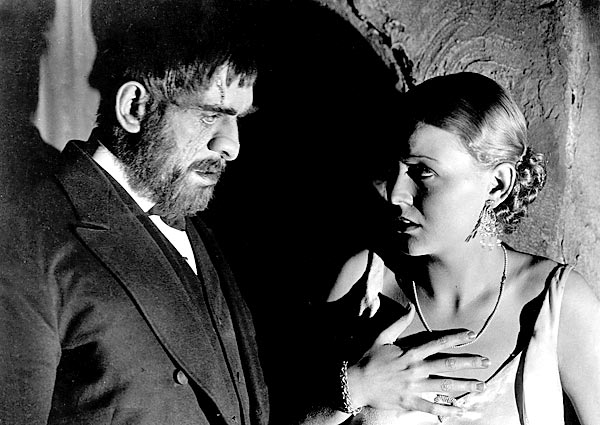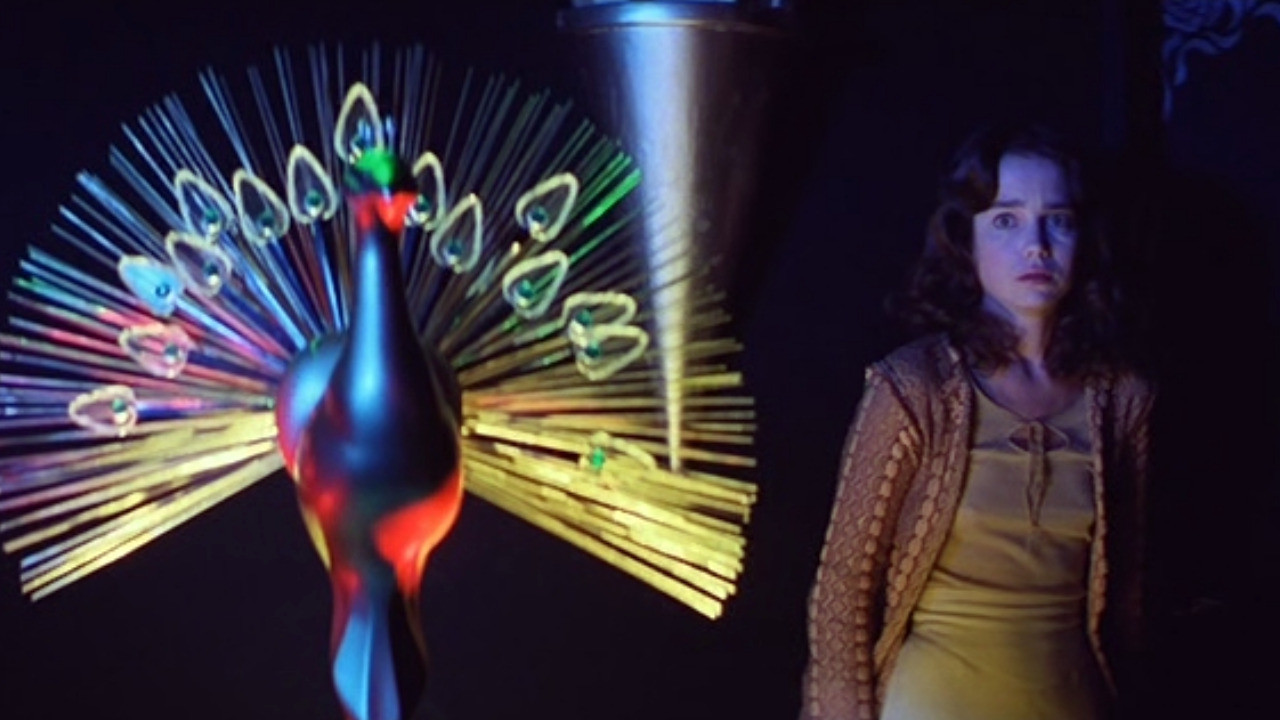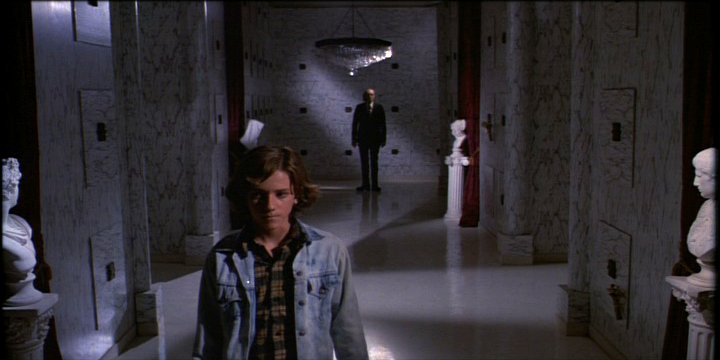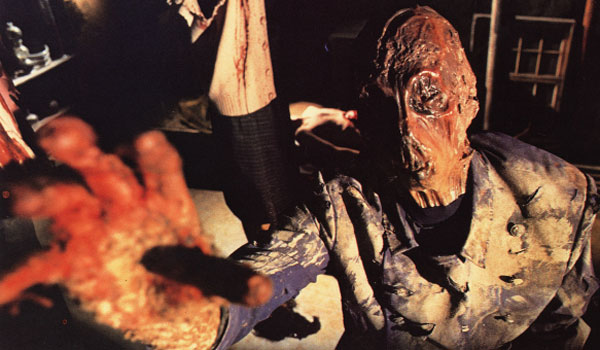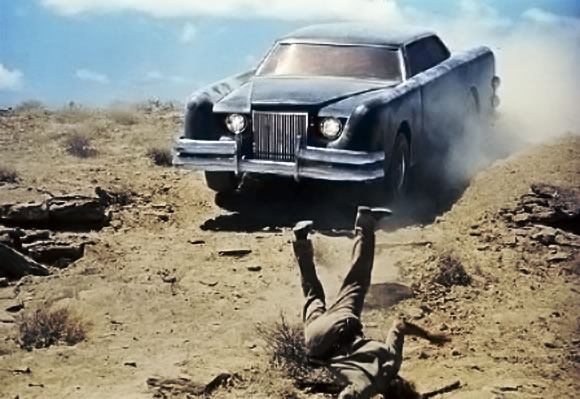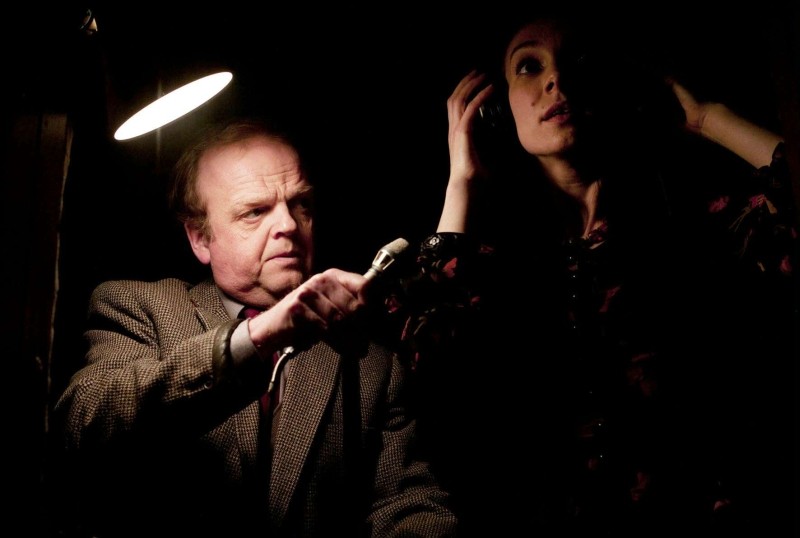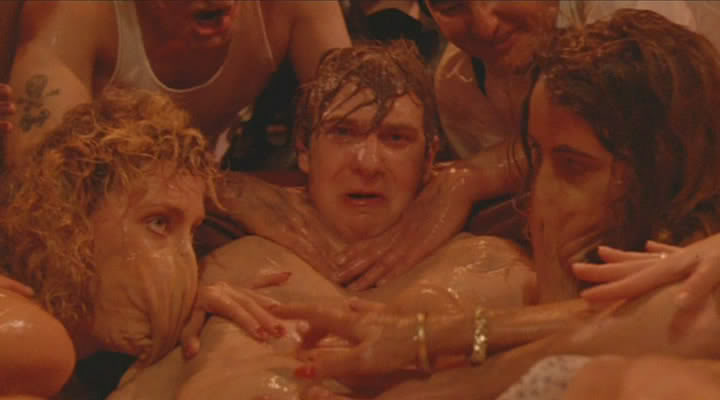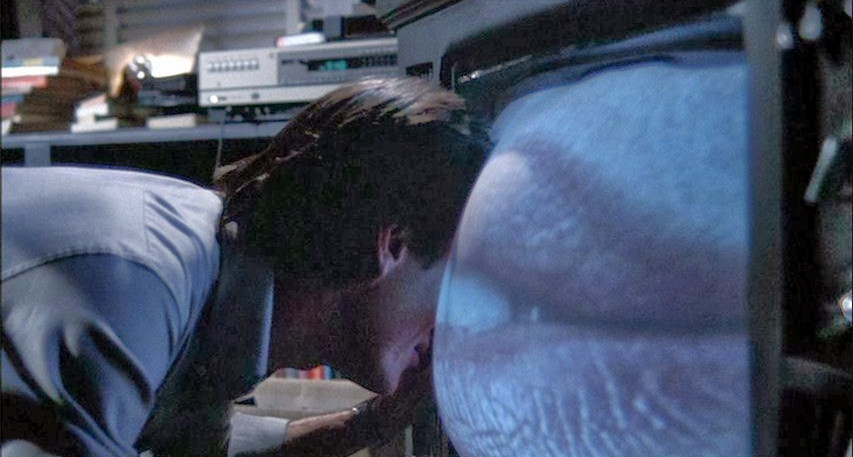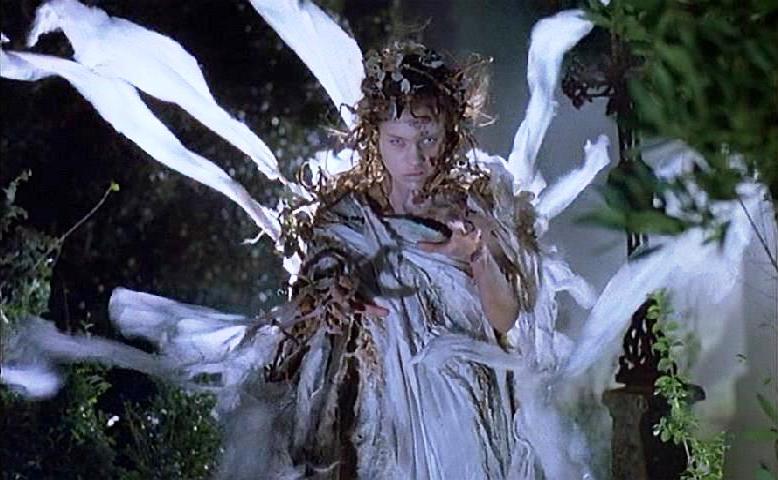9. The Old Dark House (1932)
Preceding the likes of The Texas Chain Saw Massacre and Mother’s Day by a good forty years or so, James whale’s comic horror masterpiece The Old Dark House was one of the first films to focus on a demented family of weird individuals.
The film centres on the Femm family; encompassing the violent mute butler Morgan, the camp, exceedingly eccentric Horace Femm, his religious, ageing obsessed sister Rebecca, their ancient bed-ridden father Sir Roderick Femm, and Brother Saul, the maniacal pyromaniac kept locked upstairs.
When a rainstorm forces a group of travellers to seek refuge in the eponymous old dark house, they are forced to spend the evening getting to know some of the strangest characters in horror cinema history.
Foreshadowing the subversive camp humour that lies at the centre of Whale’s later Bride of Frankenstein, the film impresses with its sharp, manic wit, Boris Karloff’s reprisal of his lumbering, silent Frankenstein monster act, and menagerie of odd characters. Still, perhaps The Old Dark House’s most impressive element is actor Ernest Thesiger’s over-the-top histrionics and repeated insistence that his guests “have a potato”.
10. Suspiria (1977)
Less a film and more an operatic barrage of disconcertingly stunning visuals and unnervingly vociferous music, Dario Argento’s Suspiria is the absolute peak of surreal Italian horror cinema. Like his countrymen, Mario Bava and Lucio Fulci, Argento builds his films around bold, grandiose set-pieces designed to showcase the Italian horror mantra of violence as art.
Indeed, narrative, character and exposition are kept to a bare minimum. In Suspiria plot is unimportant, it is merely a tool with which Argento’s mini operas of beautiful brutality, eye-catching visuals and bombastic sounds are threaded together. It is the startling power each set-piece possesses individually, as well as the cumulative effect of the overall cinematic experience that is most important.
While the focus on image and sound over plot and characterisation does threaten to lend Suspiria a rather disjointed quality like a Fulci film, Argento’s assured direction and singular artistic vision ensures everything coalesces into a unified whole. The end result is a vivid, overwhelming descent into a world of magic and evil where Argento juxtaposes vibrant colours with inky darkness, and plays sights and sounds off each other in a delicate yet disorienting ballet of art and brutality.
11. Phantasm (1979)
While the majority of 1970s independent horror cinema seeks to confront viewers with nihilistic, uncomfortably realistic tales of violence, rape and torture, director Don Coscarelli delivers a film that blends dreamy visuals and fantastical imagery. Evincing a penchant for the off-beat and unusual, Phantasm boasts an ethereal, dreamlike atmosphere punctuated by jolting nightmare visions of zombie dwarfs, killer flying spheres and a menacing Tall Man.
Where his contemporaries like Wes Craven concern themselves with unearthing the primitive savagery lurking behind civilised society (made even more disturbing because of their dedication to an almost documentary sense of verisimilitude), Coscarelli instead looks to the uncanny literature of Edgar Allan Poe and the weird tales of H. P. Lovecraft for inspiration.
Hence, Phantasm is characterised by its strange, dreamlike aura where the fantastical increasingly bleeds into the everyday, and the realm of dreams and reality blur into one unfathomable whole. This makes Phantasm a difficult film to decipher as it is often impossible to tell what is dream and what is reality.
Further compounded by Coscarelli’s refusal to explain the true meaning of his films, and the Phantasm sequels which seem to make even less sense as they go on, the film’s indecipherable nature is as compelling as it is confounding.
12. The House by the Cemetery (1981)
While not quite as overwhelmingly weird as The Beyond, Lucio Fulci’s The House by the Cemetery nevertheless features some of the director’s most impressively strange yet frustratingly ambiguous imagery. Borrowing from The Amityville Horror, The Shining and Fulci’s own zombie gore pictures, The House by the Cemetery emerges as an awkward concoction of subtle atmospherics and overblown trash excess.
While scenes such as a shop window dummy’s head falling off and bleeding lend the film an indecipherable sense of intrigue, violent images of knives penetrating skulls fulfil the exploitation quota. It is this melding of the uncanny and intangible with the confrontational and visceral that makes Fulci’s film such a uniquely strange viewing experience. His unique approach to weird horror is best summed up in the scene where a maid is mopping up a rather large spillage of blood.
Here the householder simply looks at her and says nothing about the conspicuous amount of blood on the floor or how it got there. This is what Fulci does so well, he shows the obvious, that which is expected in horror, but he never provides an explanation for it. Fulci happily provides the gore in bucket loads, but he leaves it up to the viewer to come up with their own interpretations about what it actually means.
13. The Car (1977)
Unlike the majority of films on this list, The Car isn’t an inherently weird film; in fact, it’s a surprisingly solid, well made cult movie with thrilling action sequences and a commendable performance by James Brolin. What justifies The Car’s inclusion on this list is the film’s completely ridiculous premise of a driverless demonic car terrorising a small desert community.
Essentially a spin on Jaws with the shark replaced by the eponymous automobile, the film, despite its best attempts at a serious approach, is impossible to take seriously. However, this is not to say that The Car is a bad film. On the contrary, there is a great deal of fun to be had if you are willing to embrace the film’s outlandish B-Movie premise and simply go along with the ride.
A major highlight is the opening scene where the car slowly stalks and then violently runs a couple of cyclists off the road. The best thing about the film though is the car itself; an indestructible customised 1971 Lincoln Continental Mark III with a demonic visage and memorably menacing horn, the car is an iconic movie monster in its own right.
14. Berberian Sound Studio (2012)
Berberian Sound Studio is an almost impenetrable descent into madness. Focusing on British sound designer Gilderoy’s work on a mysterious 1970s Italian horror film, it explores how the horror on screen seeps into the timid Gilderoy’s fragile mind and devours reality itself. Right from the outset there is an aura of strange ambiguity as the viewer is made acutely aware that there is something not quite right about Gilderoy’s predicament, but it is impossible to discern just what exactly is wrong.
As the film progresses, what is wrong does not seem to become any clearer; rather, the film unfolds like a mystery seemingly ripe to be solved, but in actuality there is no solution. By the end of the film nothing has been resolved and even more questions have been raised. Adding to the film’s indecipherable nature is that the English speaking viewer is made to feel just as isolated and kept in the dark about what is really happening as the protagonist.
Eschewing English subtitles when the Italian characters are speaking, the film purposefully refuses to disclose information to the viewer, keeping them guessing the true nature of conversations throughout. This, coupled with the film’s culmination with a bizarre ending that refuses easy interpretation, ensures that Berberian Sound Studio remains essential viewing for fans of off-kilter horror cinema.
15. Society (1989)
After collaborating with Stuart Gordon as producer on such over-the-top spatter classics as Re-Animator and From Beyond, Brian Yuzna struck out on his own and did the impossible, crafting a film that outdid even Gordon’s most hysterical exercises in special effects excess. Society is essentially Yuzna’s critique of the rich upper class’s domination of the poor lower class. However, in Society the notion of the rich feeding off the poor isn’t simply a metaphor.
No, in this film the rich quite literally consume the poor in a veritable orgy of special effects mayhem. Before this horrifying denouement though, Yuzna instils a growing, undulating sense of paranoia as Bill Whitney, feeling like he just doesn’t fit in, begins to suspect that his family and classmates are conspiring against him. Teasing at the surreal absurdity to come, Bill keeps experiencing weird visions of strange occurrences and unnaturally contorted bodies.
By only allowing the viewer fleeting, subliminal glances of these strange, twisted bodies, Society’s climax becomes all the more effective. Utilising the self styled surrealistic makeup effects of special effects wizard Screaming Mad George, the ending of Society pushes the boundaries of body horror with extreme, grotesque contortions of the human form.
Resembling a surreal work of art, George stretches and manipulates body parts, transforming them into abstract, almost unrecognisable shapes. With Yuzna’s predilection for the outrageous and George’s ludicrous, overwhelmingly odd special effects, Society is the final word in bizarre body horror.
16. Videodrome (1983)
In Videodrome David Cronenberg expands the scope of the body horror format by combining the visceral grotesqueness of his early work with a more cerebral aspect. Looking at how television signals can affect the brain and alter our perceptions on reality, Videodrome is perhaps the most terrifying of all Cronenberg’s body horrors.
By looking not just at a physical metamorphosis but a mental one, the film plays on our terror of losing our individual personalities and becoming a vessel for some other power, in this case the mysterious new flesh. Videodrome is also, by its very nature, one of Cronenberg’s strangest body horror outings.
As Max Renn, the President of a small television station, becomes more exposed to the Videodrome programme’s dangerous broadcast signals, television and reality become increasingly blurred. Seeing the film through Renn’s eyes, it also becomes more and more difficult for us to distinguish between television, hallucination, dream and reality.
As Renn’s metamorphosis progresses, the imagery takes on an even more hallucinogenic quality (video slots in stomachs, hands that turn into guns), and the plot becomes increasingly indecipherable, we are forced to question our own perceptions on reality.
17. Cemetery Man (1994)
After following in the footsteps of Dario Argento with his superb giallo/slasher movie Stage Fright, director Michele Soavi went on to consolidate his position as one of Italian horror cinema’s most imaginative auteurs with his offbeat comedy zombie film Cemetery Man. The film looks at the problems faced by Rupert Everett’s cemetery caretaker as he is forced to kill the dead who are rising from their graves.
A truly unique effort, Cemetery Man distinguishes itself from lesser fare with its weird characters, surreal black humour, and eccentric flourishes. Soavi revels in his unorthodox approach with the repeated reincarnation of a dead lover, an everyday, nonchalant approach to the dead returning from the grave, and the appearance of Death himself.
The film also displays a manic energy as the zombie effects become increasingly extravagant and the gore more and more absurd. Soavi’s greatest feat is that, unlike many films which flirt with the surreal, the offbeat elements never feel pretentious; rather, the film is always playful with its strangeness, suffusing artistic creativity with a gleeful irreverence and entertaining exploitation carnage.
